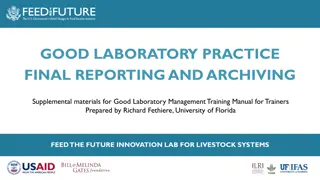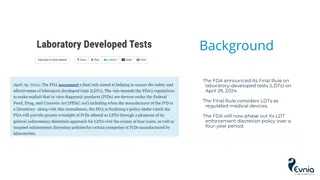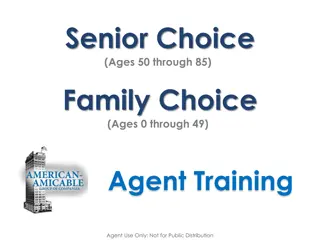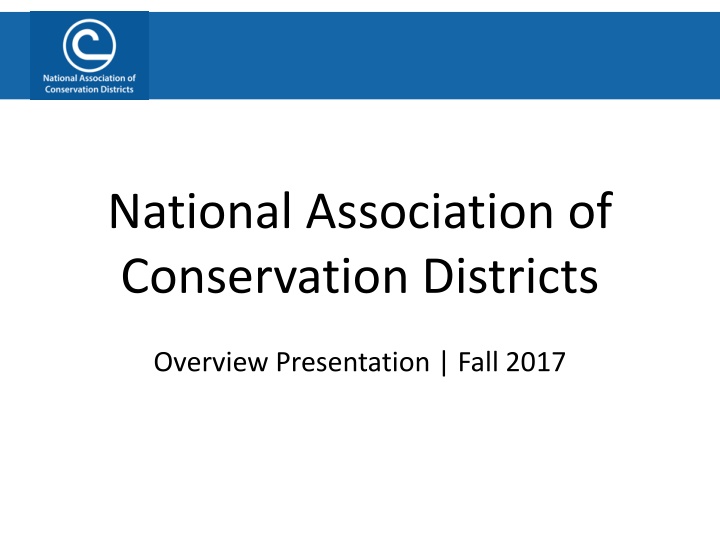
National Association of Conservation Districts Overview Presentation Fall 2017
Explore the history, role, and functions of the National Association of Conservation Districts from its roots in the Dust Bowl era to becoming a unified voice for conservation. Discover how NACD advocates, disseminates communications, provides direct services to districts, and develops conservation leaders for the future.
Download Presentation

Please find below an Image/Link to download the presentation.
The content on the website is provided AS IS for your information and personal use only. It may not be sold, licensed, or shared on other websites without obtaining consent from the author. If you encounter any issues during the download, it is possible that the publisher has removed the file from their server.
You are allowed to download the files provided on this website for personal or commercial use, subject to the condition that they are used lawfully. All files are the property of their respective owners.
The content on the website is provided AS IS for your information and personal use only. It may not be sold, licensed, or shared on other websites without obtaining consent from the author.
E N D
Presentation Transcript
National Association of Conservation Districts Overview Presentation | Fall 2017
Overview History Role and Functions One voice for conservation Advocate Disseminate communications Provide direct services to districts Develop conservation leaders The Future
Historically speaking It all started with the Dust Bowl 1933 1935 1936 1937 1938 Soil Conservation Act passed; Soil Erosion Service moved to USDA Model conservation district law developed for state consideration; 22 states pass enabling legislation the same year Soil Erosion Service is created and housed within the Interior Department Congress enacts Soil Conservation and Domestic Allotment Act authorizing USDA to fund conservation First conservation district created in Virginia
In 1946 1. 2. WWII had ended Surplus military equipment appropriated 3. 40 states converge on Washington, D.C. as an unorganized group (of) many voices rather than one 4. 17 states go to Chicago and form NASCDGO, later renamed NACD
NACDs role and functions 1. One voice for conservation 2. Advocate for programs, policy, and funding for conservation on Capitol Hill and throughout the country 3. Publish four regular publications, plus blog stories weekly and social media daily 4. Provide direct services to districts 5. Develop conservation leaders
One Voice NACD is a grassroots organization, member-driven by local conservation district boards and governed through a system of graduated representation. Conservation Districts through 2,900 + State and Territory Associations select 58 NACD Board of Directors 116 which sets policy and elects Officers(5 plus CEO), Executive Board (8), Region Chairs (7) which executes policy and manages the association
What does locally-led mean? Over the years, federal, state and local governments have channeled assistance through conservation districts to address virtually every aspect of natural resource conservation. This process of local people working to assess community conservation needs, make decisions, and implement solutions is called locally led conservation.
What does voluntary and incentive-based conservation mean? Voluntary conservation is completed on the part of landowners and managers who are not required by law to do so. 80 years of evidence makes a strong case for voluntary, incentive-based conservation. In many instances, it has proved more effective and less expensive than regulatory means.
How does NACD deliver and promote this message on the importance of voluntary, incentive-based, locally-led conservation?
Advocacy NACD advocates for the interests of this nation s 3,000 conservation districts and their state/territory associations on Capitol Hill year-round. We testify before Congress, submit letters and comments on proposed rules and legislation, and regularly meet with lawmakers and their staff to advance beneficial policy related to voluntary conservation. NACD s government affairs team also engages our membership each spring during NACD s annual fly-in. The event serves as an opportunity for conservation districts to advocate for policies that benefit them directly and educate decision-makers on the ins and outs of district work.
Communications NACD produces and disseminates regular publications for our members and partners to keep them informed and engaged. NACD also coordinates internal communications at the national level between districts, states, regions, and federal partners, like the Natural Resources Conservation Service. Our external communications, such as press releases, blog posts, interviews with media, our website, and social media accounts make up another core facet of NACD s strategy to educate the public about voluntary conservation.
Direct Services NACD (1) hosts a national directory, (2) produces technical reports and guides for districts to utilize, and (3) runs a number of programs that provide education, resources, and networking opportunities. To name just a few, NACD offers: Webinars The Soil Health Champions Network Urban Agriculture Conservation Grant Initiative Conservation Planning Boot Camp Stewardship and education materials free of charge
Leadership Development NACD develops conservation leaders through stand-alone training programs and annual meetings held in the winter, spring, and summer. At these meetings, NACD offers facilitated networking, educational breakouts, and skill-building seminars all of which serve to energize and build capacity across this nation s conservation community. NACD s leadership structure also cultivates skills in problem solving and collaborative planning. NACD s committees and its resource policy groups, for instance, offer members opportunities to guide NACD policy and lead NACD initiatives.
Every acre, every American, every day.

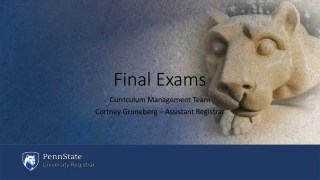
![READ⚡[PDF]✔ Yup I'm Dead...Now What? The Deluxe Edition: A Guide to My Life Info](/thumb/20463/read-pdf-yup-i-m-dead-now-what-the-deluxe-edition-a-guide-to-my-life-info.jpg)



